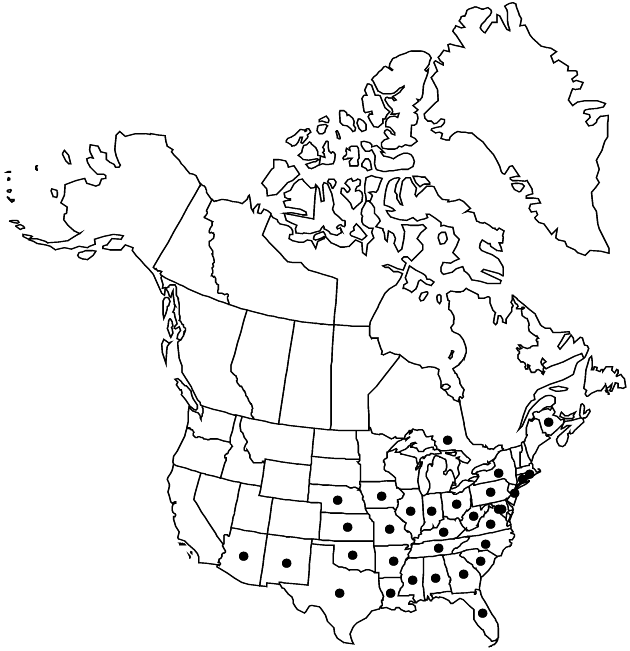Difference between revisions of "Bidens bipinnata"
Sp. Pl. 2: 832. 1753.
FNA>Volume Importer |
FNA>Volume Importer |
||
| Line 11: | Line 11: | ||
|name=Bidens bipinnata var. biternatoides | |name=Bidens bipinnata var. biternatoides | ||
|authority=Sherff | |authority=Sherff | ||
| + | |rank=variety | ||
}} | }} | ||
|hierarchy=Asteraceae;Asteraceae tribe Heliantheae;Asteraceae (tribe Heliantheae) subtribe Coreopsidinae;Bidens;Bidens bipinnata | |hierarchy=Asteraceae;Asteraceae tribe Heliantheae;Asteraceae (tribe Heliantheae) subtribe Coreopsidinae;Bidens;Bidens bipinnata | ||
| Line 35: | Line 36: | ||
-->{{#Taxon: | -->{{#Taxon: | ||
name=Bidens bipinnata | name=Bidens bipinnata | ||
| − | |||
|authority=Linnaeus | |authority=Linnaeus | ||
|rank=species | |rank=species | ||
| Line 50: | Line 50: | ||
|publication year=1753 | |publication year=1753 | ||
|special status= | |special status= | ||
| − | |source xml=https://jpend@bitbucket.org/aafc-mbb/fna-data-curation.git/src/ | + | |source xml=https://jpend@bitbucket.org/aafc-mbb/fna-data-curation.git/src/eaa6e58056e40c9ef614d8f47aea294977a1a5e9/coarse_grained_fna_xml/V19-20-21/V21_512.xml |
|tribe=Asteraceae tribe Heliantheae | |tribe=Asteraceae tribe Heliantheae | ||
|subtribe=Asteraceae (tribe Heliantheae) subtribe Coreopsidinae | |subtribe=Asteraceae (tribe Heliantheae) subtribe Coreopsidinae | ||
Revision as of 20:37, 16 December 2019
Annuals, (15–)30–100(–150+) cm. Leaves: petioles 20–50 mm; blades rounded-deltate to ovate or lanceolate overall, (20–)30–70+ × (20–)30–60+ mm, (1–)2(–3)-pinnatisect, ultimate lobes obovate or lanceolate, 15–45+ × 10–25+ mm, bases truncate to cuneate, ultimate margins entire, sometimes ciliolate, apices rounded to acute or attenuate, faces usually glabrous, sometimes hirtellous. Heads usually borne singly, sometimes in ± corymbiform arrays. Peduncles (10–)20–50(–100) mm. Calyculi of (7–)8(–10) linear bractlets 3–5 mm, ± appressed, margins ciliate, abaxial faces usually glabrous. Involucres ± campanulate, 5–7 × 3–4(–5) mm. Phyllaries 8–12, lanceolate to linear, 4–6 mm. Ray florets 0 or 3–5+; laminae yellowish or whitish, 1–2(–3) mm. Disc florets 10–20(–30+); corollas yellowish to whitish, 2–3 mm. Cypselae red-brown, outer weakly obcompressed, 7–15 mm, inner ± 4-angled, linear to linear-fusiform, 12–18 mm, margins not ciliate, apices ± attenuate, faces 2-grooved, often tuberculate-hispidulous; pappi of (2–)3–4, erect to divergent, retrorsely barbed awns 2–4 mm. 2n = 24, 72.
Phenology: Flowering (Jun–)Aug–Sep(–Oct).
Habitat: Fields, forests, disturbed, wettish sites
Elevation: 10–1800 m
Distribution

N.B., Ont., Ala., Ariz., Ark., Conn., D.C., Fla., Ga., Ill., Ind., Iowa, Kans., Ky., La., Md., Miss., Mo., Nebr., N.J., N.Mex., N.Y., N.C., Ohio, Okla., Pa., R.I., S.C., Tenn., Tex., Va., W.Va., South America, Europe, Asia, Pacific Islands.
Discussion
Bidens bipinnata is probably native in eastern Asia and introduced in South America, Europe, Asia, and Pacific Islands.
Selected References
None.
